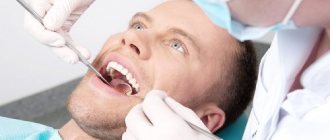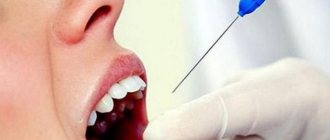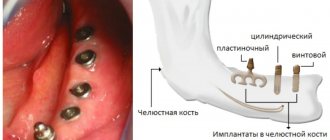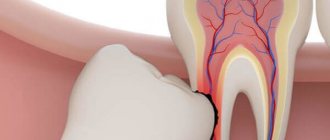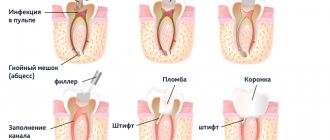MAKE AN APPOINTMENT
- Removal cost
- Indications
- Preparation
- Methods and steps
- Complications
- What to do after the procedure
- Our doctors
- Reviews
- To make an appointment with a doctor
In practice, specialists at Plomba dentistry periodically encounter cases of complete destruction of the crown of a tooth and infection of the root system, in which a purulent-inflammatory process occurs. Most often, this problem can be solved only by removing the root and remains of the tooth. But sometimes the root system can be preserved for subsequent prosthetics. How the removal will be carried out, what measures and tools will be used, the doctor will be able to decide after familiarizing himself with the clinical picture.
Indications for tooth root removal
- Complete destruction of the coronal (supra-gingival) part, affecting the root system;
- extensive purulent-inflammatory process at the root: cyst, abscess;
- longitudinal axial fracture;
- previous incorrect extraction - during removal, fragments remained in the hole, causing an inflammatory process that affected nearby tissues.
The damaged area of the tooth is easily identified visually. Additional symptoms of the need for urgent medical intervention and even possible removal of a diseased tooth are:
- twitching, throbbing pain;
- acute pain due to mechanical action - pressing, biting, chewing food;
- unpleasant odor;
- gum hyperemia;
- a purulent process is a direct indication of the need to remove the root of a diseased tooth;
- elevated body temperature.
If one or more symptoms are present, the destroyed units are removed. In some cases, incomplete removal is performed - resection of the tooth roots. This usually occurs when the root apex is affected by periodontitis, a small cyst, or granuloma. Often in such diseases the coronal part is preserved. In this case, the damaged part is removed through an incision in the gum. Subsequently, installing a crown solves the problem of restoring the chewing unit.
Possible complications
If the procedure for removing a molar tooth was carried out by a doctor without proper experience, sanitary and hygienic requirements were violated, or the patient violated medical recommendations, then there is a possibility of complications:
- heavy bleeding that cannot be stopped for a long time;
- inflammatory process in the socket caused by infection;
- jaw movements become limited due to problems with the masticatory muscles;
- the alveolus is exposed;
- sharp edges of the hole are formed;
- limited osteomyelitis is diagnosed in the socket from the extracted tooth.
Symptoms of developing pathologies can be severe pain, unpleasant odor from the mouth, purulent discharge from the socket, the appearance of white plaque on the alveoli and the onset of bleeding. In these cases, you should immediately contact your dentist.
Preparing for tooth extraction
Removing a tooth or its roots is a rather complex surgical dental procedure, but it will not be difficult for the patient to prepare for it. If local anesthesia is planned to be used for pain relief, the patient should eat a large meal before visiting the dentist because:
- After removing a tooth or root, it is forbidden to eat for several hours;
- salivation after eating is significantly reduced, which will make the dentist’s work easier;
- after eating, blood glucose levels are normalized and the risk of loss of consciousness under the influence of local anesthesia is reduced
In the case of general anesthesia, on the contrary, it is necessary to abstain from eating for several hours before the removal procedure begins. Drinking alcohol before visiting the dentist is prohibited. Alcohol affects the structure of the blood and does not combine well with anesthetics, not to mention the negative impact on the human psyche and behavior.
Inflammatory and infectious diseases of any nature must be cured before surgery to remove a tooth or its roots. The dentist must be warned about the presence of allergies to certain medications, in particular to anesthesia drugs.
A normal pregnancy in general is not a contraindication to dental procedures. However, during this period the use of a number of drugs used in dentistry is prohibited, so information about pregnancy is entered into the patient’s dental record. Also, detailed information about the patient’s chronic diseases, especially heart pathologies, is recorded in the dental record.
Methods and stages of removing teeth or their roots
Most often in modern dentistry, only two methods of removing teeth or their roots are practiced:
- removing a tooth from the gum using forceps;
- rocking of the tooth and its rotation around its axis by elevators.
In cases where the roots are deep, the gum tissue can be cut with a scalpel. In general, the process of removing teeth or their roots is divided into the following stages:
- separation of the round ligament from the neck of the tooth (ligamentotomy);
- applying (installing) forceps to the tooth;
- advancing the fixing elements of the forceps under the gum;
- final fixation of the forceps;
- rotation (rotation) or luxation (swaying) of the tooth;
- extracting a tooth or its roots from the socket.
The procedure itself.
It can last up to several hours, depending on the complexity of the roots. The operation is performed under local anesthesia.
If there is no inflammatory process, using special tools, the gums and circular ligament are separated from the roots on all sides, then the necessary forceps are applied. During the inflammatory process, the tissue around the tooth is melted, which makes it possible for the deepest application of forceps without the use of special instruments. If the roots of the tooth cannot be extracted using forceps, use an elevator, which is inserted between the roots or between the root and the wall of the socket. Straight - for single maxillary roots, angular - for mandibular roots.
If more than one root needs to be removed, but it is not possible to do this with forceps and elevators, then under these conditions the roots of the teeth are separated from each other with a drill, and then removed with standard instruments.
Description, treatment and photos for this clinical case
were provided by ViTerra dental surgeon A.V. Khalyapin.
Common complications after tooth extraction
Tooth extraction is essentially a full-fledged surgical intervention. Symptoms such as pain and inflammation in the surgical area are considered normal for the rehabilitation period, unless they are too severe and are not eliminated 3-4 days after tooth (root) extraction. The rehabilitation period may also be characterized by increased body temperature and enlarged lymph nodes.
More serious clinical complications include:
- renewed bleeding from the socket after tooth (root) removal - methods for eliminating minor bleeding can be discussed by the dentist; in case of intense bleeding, it is necessary to urgently consult a specialist;
- incomplete removal of the tooth root - the presence of residues is diagnosed by x-ray and follow-up and quickly eliminated;
- alveolitis is a dangerous, but easily eliminated by antibiotics, inflammatory process in bone tissue, characterized by a significant increase in body temperature, swelling, severe pain, and requires immediate treatment, as it can lead to sepsis.
In the first hours after removal, the patient should not eat. Cotton swabs from the surgical area can be removed 30 minutes after completion of all manipulations. In the first days after surgery, it is not recommended to eat sour, sweet, salty, very chilled or hot foods. Short-term cold compresses can relieve pain in the first days after tooth extraction.
Tooth extraction is a last resort in modern dentistry. A qualified specialist must strive by all means to save the tooth even in the most difficult cases.
The final stage of restoring oral health is not the removal, but the replacement of teeth (except for wisdom teeth).
Purposes of tooth extraction surgery
- Sanitation of the body by eliminating foci of odontogenic infection.
- Elimination of acute odontogenic inflammatory process.
- Elimination of pre-tumor processes caused by chronic trauma to the oral mucosa, tongue and teeth.
- Improving chewing function by creating conditions for dental prosthetics.
- Elimination of psycho-emotional discomfort and improvement of chewing function in the treatment of patients with anomalies of the dentofacial apparatus.
Indications for tooth extraction are divided into two groups: general and local.
General indications include those in which the manifestations of the pathological condition of the body, caused by a diseased tooth as a source of infection, come to the fore. For example, general diseases of organs or systems in the body (endocardium, myocardium, kidneys, etc.).
Local indications can be divided into 3 groups:
- Sanitation indications for tooth extraction: chronic periodontitis, acute periodontitis, the presence of pathological processes around an abnormally located tooth, destroyed milk teeth, etc.
- Sanitation and functional indications for tooth extraction: an incorrectly located tooth that injures the mucous membrane of the oral cavity, supernumerary teeth, when tilted towards the vestibule of the oral cavity or towards the tongue.
- Sanitation and prosthetic indications for tooth extraction: single teeth that prevent the stabilization of a removable denture, tooth roots that cannot be used to support a denture, teeth that have protruded due to the lack of antagonists, tooth extraction for orthopedic indications.
There are no absolute contraindications to tooth extraction. However, for some diseases, the operation should be postponed and appropriate preparations should be made in advance. Temporary contraindications to tooth extraction surgery are:
- cardiovascular diseases during exacerbation;
- acute diseases of the kidneys, pancreas;
- infectious hepatitis (acute and exacerbation period);
- blood diseases occurring with hemorrhagic symptoms;
- acute infectious diseases;
- diseases of the central nervous system;
- mental illness during exacerbation;
- pregnancy (first and third trimesters);
- acute radiation sickness;
- teeth located in the area of a malignant tumor.
To perform tooth extraction surgery, special tools are used: forceps and elevators (levers). The forceps differ in their intended purpose:
- for removing teeth of the upper or lower jaw;
- for removing teeth with or without a crown;
- for tooth extraction in adults and children;
- for removing teeth with limited mouth opening.
All of them have elements such as cheeks, handles and a lock. The use of elevators is based on the implementation of the lever or gate principle.
Elevators can be used as the main tool for removing teeth with damaged crowns (roots), impacted and dystopic, and also as an auxiliary tool. In these cases, the first stage of dislocation is carried out using an elevator, and the dislocation and extraction of the tooth are completed with forceps.
What to do after tooth extraction
The operation cannot be prescribed without an X-ray examination, which makes it possible to determine the amount and degree of root destruction and the extent of the inflammatory process. Before root removal, the patient is given anesthesia, after which the gum is separated from the neck of the tooth. The surgeon's further actions are determined by the clinical picture. Dentists call the most difficult operation the removal of the deep and often twisted roots of the “figure eight” – the eighth tooth in the dentition. But the specialists of the Plomba clinic successfully cope with this too.
Diagnostics before wisdom tooth removal
Before removing a wisdom tooth, the surgeon needs to see a complete and accurate picture of its location. This is especially true in cases where the tooth has not erupted.
The specialist must prescribe an x-ray or orthopantomogram.
Before the operation:
- inspection;
- taking anamnesis;
- analysis of the received images.
